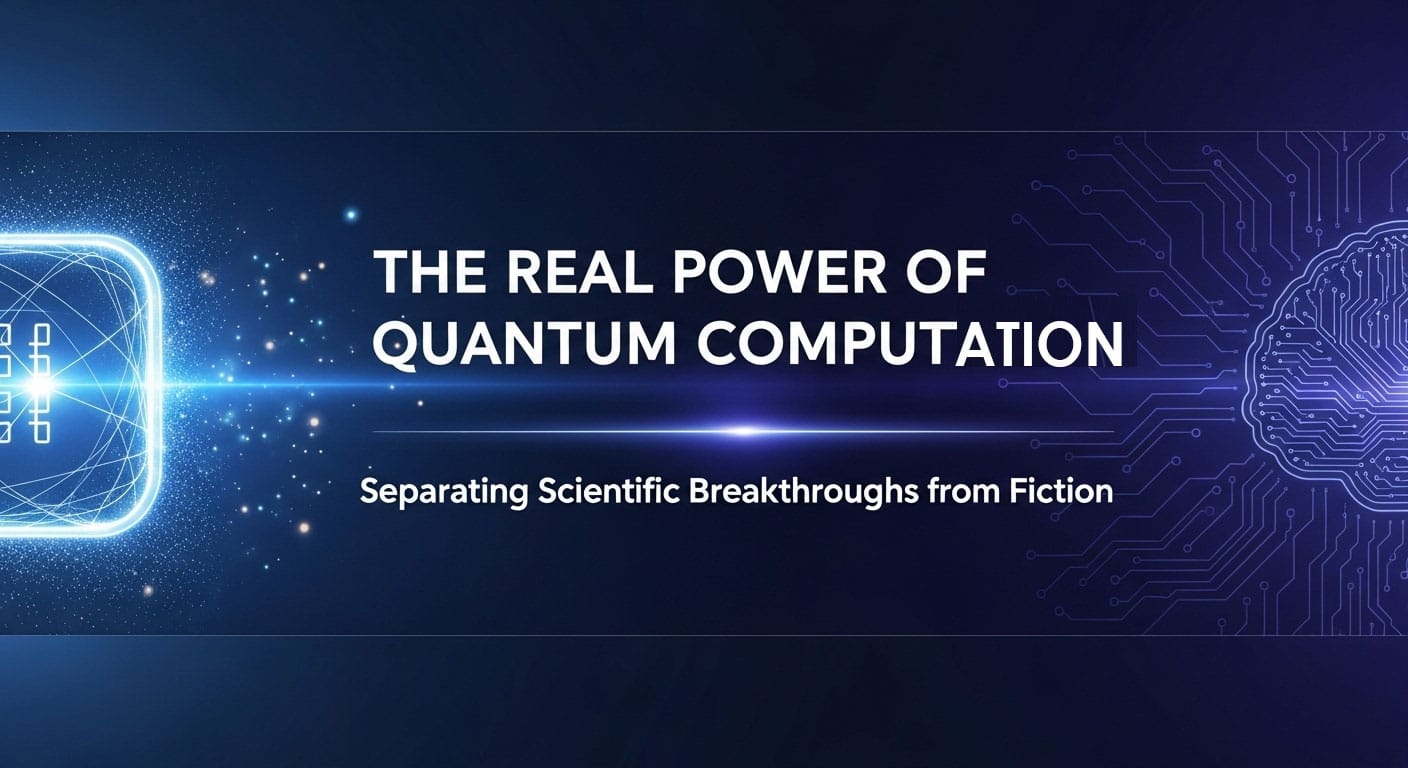The field of quantum computing is one of the most exciting and rapidly advancing areas of modern science. It promises to solve problems currently impossible for even the most powerful supercomputers. However, this immense potential also creates a fertile ground for myths and misconceptions. This article delves into the core principles of Quantum Computation, using the real, documented progress of leading research labs to separate scientific fact from compelling fiction.
The Fundamentals: How Quantum Computers Work
To understand the capabilities and limitations of quantum machines, one must first grasp their unique operational language. Unlike classical computers that use bits (0s or 1s), these advanced systems use quantum bits, or qubits.
The Qubit and Superposition
A qubit is the basic unit of quantum information. Thanks to a principle called superposition, a qubit can represent a 0, a 1, or a combination of both states simultaneously. This ability to exist in multiple states at once allows quantum computers to explore a vast number of possibilities in parallel, giving them their extraordinary processing power.
The Process: Interference and Entanglement
A quantum computation is a carefully orchestrated process. It uses a sequence of operations, known as quantum gates, to manipulate qubits. The goal is to choreograph these operations so that the probabilities of incorrect answers cancel each other out (destructive interference), while the probabilities of the correct answer are amplified (constructive interference). This process also leverages entanglement, a phenomenon where qubits become intrinsically linked, allowing for complex, correlated calculations.
The Output: Measurement and Collapse
After an algorithm runs, the result is extracted through measurement. This act forces each qubit to “collapse” out of its superposition into a definite classical state of either 0 or 1. Therefore, the direct, raw output of a quantum computer is not an image or a complex concept, but a string of classical bits (e.g., ‘0110101…’). Because the process is probabilistic, the computation is run many times, and the final answer is a statistical distribution of these bitstrings, which a classical computer then analyzes to find the most likely solution.
The Evolution of Quantum Processors: A Story of Increasing Control
The journey toward a useful quantum computer is a story of methodical engineering progress, not unpredictable glitches. The processor lineage from a lab like Google Quantum AI illustrates a clear focus on scalability, power, and, most importantly, reliability.
| Processor Name | Year | Qubit Count | Key Achievement/Purpose |
|---|---|---|---|
| Bristlecone | 2018 | 72 | A testbed for system error rates and scalability; a proof-of-principle for building larger systems. |
| Sycamore | 2019 | 53 | First demonstration of “quantum supremacy” and use in scientific simulations. |
| Willow | 2024 | 105 | A breakthrough in quantum error correction, demonstrating exponential error reduction as system size increases. |
Addressing Common Misconceptions in Quantum Mechanics
The abstract nature of quantum physics often leads to popular myths. By examining them, we can gain a clearer understanding of what the science truly entails.
The Real “Observer Effect”
A common myth suggests that reality is shaped by conscious observation. In quantum mechanics, however, the “observer effect” is a physical phenomenon. “Observation” is synonymous with “measurement,” which is any physical interaction with a quantum system. To measure a qubit, you must interact with it, and that interaction inevitably disturbs its state. This process, more accurately called decoherence, happens constantly due to interaction with the environment (e.g., thermal vibrations, stray fields), not because a conscious being is watching.
Emergence: Order vs. Sentience
Another area of confusion is emergence—where complex patterns arise from simple rules, like a snowflake’s symmetry emerging from water molecules. While quantum systems are complex, claims that they can spontaneously generate sentient entities represent a leap from accepted science (weak emergence) into pure speculation (strong emergence). The real breakthrough of modern quantum processors like Willow is the opposite: they represent a triumph of order over chaos through Quantum Error Correction (QEC), a set of techniques designed to suppress random fluctuations and make the system’s operation more reliable.
Conclusion: The Authentic Wonder of Quantum Computing
While stories of sentient machines and images from other realms are captivating, they obscure the true and arguably more profound purpose of this technology. The real mission of the quantum information science community is to build a fault-tolerant, error-corrected quantum computer capable of tackling some of humanity’s greatest challenges. The future of quantum computation lies in its potential to revolutionize medicine by simulating molecules for drug discovery, to create new materials with unimagined properties, and to optimize complex systems for a more sustainable world. The reality of this scientific pursuit is far more wondrous than any fiction.











